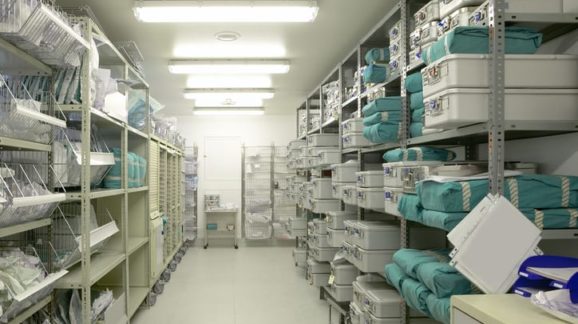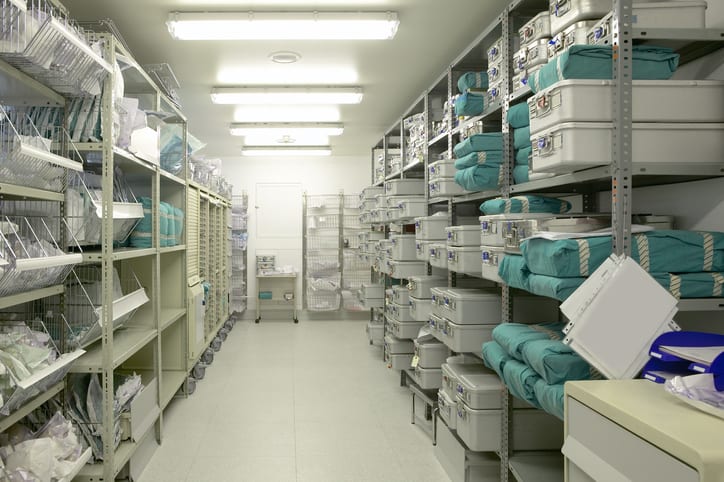How SEC Accounting Regulations Hindered National Stockpile—and Still May Be Doing So

 In a new report, my Competitive Enterprise Institute colleagues and I outline foolish and outdated regulations—listed in social media with the hashtag #NeverNeeded—that are frustrating responses to the pandemic and its aftermath. Among those is an obscure regulatory “guidance” that may be hindering production and distribution of much-needed medical supplies—from ventilators to personal protective equipment (PPE) such as masks and gloves.
In a new report, my Competitive Enterprise Institute colleagues and I outline foolish and outdated regulations—listed in social media with the hashtag #NeverNeeded—that are frustrating responses to the pandemic and its aftermath. Among those is an obscure regulatory “guidance” that may be hindering production and distribution of much-needed medical supplies—from ventilators to personal protective equipment (PPE) such as masks and gloves.
The kicker is that this “guidance” (which, as CEI’s Wayne Crews has pointed out with other regulatory “guidance documents,” can have the force of a full rule or regulation) is from a government entity not usually associated with public health: the Securities and Exchange Commission (SEC). The SEC guidance, an accounting “bulletin” that governs “bill and hold” transactions, already helped inflict a shortage of vaccines for the flu and childhood diseases in 2005. And though the SEC eventually exempted vaccines and the shortage ended, this guidance and an update still appear to apply to medical supplies from ventilators to PPE.
The well-documented role of the SEC guidance in the 2005 vaccine shortage is worth revisiting both as a case study of the harm inflicted by a #NeverNeeded regulation, and because the guidance may now be harming the production of those desperately needed items, as well as the ability to hold them as part of the Strategic National Stockpile for the hospitals that need them most.
In 2005, fear of a pandemic was in the air. There were near-misses with contagious diseases: SARS in 2002-2003 followed by the avian (bird) flu in 2004. But the biggest danger in 2005 turned to be severe vaccine shortages in the federal stockpile for both influenza and childhood diseases such as diphtheria and tetanus.
Early that year, three out of the four companies that supplied the federal stockpile with children’s vaccines announced they would no longer do so. Experts fingered the SEC’s Staff Accounting Bulletin 101 as the proximate cause. As a Washington Post story noted in April 2005, “it appears that the Pediatric Vaccine Stockpile has become an innocent bystander wounded in the government’s crackdown on deceptive accounting practices.”
The SEC accounting guidance, applying to “bill-and-hold” transaction orders in which a product is not immediately delivered to its customer, went counter to the very purpose of the stockpile. With the rationale that in many instances products can be returned after they are delivered, this guidance states that even if total cash due for products is paid up-front, “revenue should not be recognized until final delivery has occurred.”
But in enforcing the guidance, the SEC ignored the purpose of the stockpile, which is to have on hand enough vaccines, drugs, and medical supplies that they may never need to be delivered. Vaccines and other items in the stockpile are often stored directly at the manufacturer—to save costs and help prevent contamination that could occur by excessively moving the medical products around—until needed at a hospital or doctor’s office. While the specifics on the locations of the stockpile are not released to the public, the Department of Health and Human Services states that the stockpile partially consists of “managed inventories … maintained by specific vendors or manufacturers.”
Yet, the SEC guidance stubbornly states that revenues should only be booked upon delivery to the customer, even if, as in the case of the stockpile, “customers may not yet be ready to take delivery of the products for various reasons.” Booking revenue here is a no-go even if, as with the stockpile, the contracts specified that the customer would pay for items that may never be used.
The upshot of this policy was that no matter how much cash the government put in vaccine makers’ hands for supplying the stockpile, they could not include this money in their official sales until it was actually delivered to doctors when and if there was a disease outbreak. In fact, the companies had to take a paper loss for this part of their business, because the SEC was not about to let them postpone “recognition” of their costs of making the vaccines. And even if just on paper, losses can affect not just reports to shareholders, but loan covenants with lenders, and can reduce or even eliminate a company’s line of credit.
One of the three companies to stop supplying the stockpile by 2005 stated bluntly that the SEC accounting guidance was the reason for its withdrawal. In a letter quoted in the Washington Post article, Aventis (now Sanofi, as the result of a merger) wrote that “short of SEC changes in the interpretation of Staff Accounting Bulletin #101,” the company would be “out of the stockpile business.”
As flu season started later that year, the stockpile also began to experience shortages of flu vaccine. On October 21, 2005, the Wall Street Journal published my op-ed “Death by Accounting,” in which I proclaimed that if the SEC didn’t change its guidance on revenue recognition, it was “time for Congress to act—before the pandemic occurs.” About a month later, the SEC, under the leadership of newly confirmed chairman Chris Cox, issued an “interpretive release” stating it would “not object” if vaccine makers recognized revenue when they received payment for supplying the stockpile, regardless of whether the vaccine had been delivered.
The SEC’s exemption of vaccines from the guidance paid immediate public health dividends. The U.S. has never experienced significant shortages of flu or childhood vaccines since then, and in 2014 the public health news site Healio reported that there were “six suppliers of seasonal influenza vaccine to the United States and dozens of promising next-generation vaccines in the developmental pipeline.”
Yet unfortunately, the 2005 exemption only applied to vaccines. Other important items produced for the stockpile—such as ventilators, PPE, and drugs—were still subject to the guidance. And they still apparently are—e ven at the height of the COVID-19 pandemic today.
An updated SEC guidance in 2017 reaffirms the vaccine exemption by stating that that “vaccine manufacturers should recognize revenue … when vaccines are placed into Federal Governmental stockpile programs.” But the new guidance then adds that this exemption for the stockpile “is not applicable to transactions other than the sales of enumerated vaccines by vaccine manufacturers.”
This means that manufacturers of ventilators, PPE, and other important medical supplies are operating under the uncertainty that they may not be able to book revenue—and may have to take paper losses—if they help supply the federal stockpile. This regulatory cloud could be especially harmful in the case of ventilators, in which even the less expensive models cost thousands of dollars to make. There are widely varying estimates of how many ventilators and other supplies will be needed before COVID-19 reaches its apex, and political leaders are pushing for production of a reserve that will exceed what is needed.
These facts mean that companies could again be stuck with huge paper losses until the products in the stockpile are used, even though the companies have the money in hand. As with vaccines, this guidance could again be a big disincentive to producing needed medical items for the stockpile and the general medical supply chain. Indeed, it may have played a role in failed attempts to replenish the stockpile of ventilators over the past two decades, as companies may have been discouraged then by the prospect of paper losses.
The SEC needs to immediately extend the exemption for vaccines to all items in the Strategic National Stockpile, and then review if its “bill and hold” guidance is also harming states’ and private hospitals’ ability to bolster their own reserves of medical supplies. Needed supplies should never be blocked by #NeverNeeded regulations.
CEI Research Associate Gibson Kirsch contributed to this post.